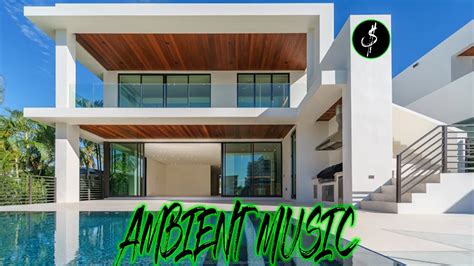The Ambient Music Formula: Guaranteed Success? (A Deep Dive into Composition and Marketing)
The allure of creating successful ambient music is undeniable. Its calming, atmospheric soundscapes are increasingly sought after in a world that often feels overwhelming. But the path to creating ambient music that resonates with listeners and achieves commercial success isn't paved with simple formulas. While there's no guaranteed recipe, understanding key compositional elements and shrewd marketing strategies significantly increases your chances of success. This article delves into both, exploring the nuances of crafting captivating ambient sounds and navigating the complexities of the music industry.
What Makes Ambient Music Successful?
Successful ambient music isn't just about creating relaxing sounds; it's about crafting a complete listening experience. This involves careful consideration of several key factors:
1. Texture and Timbre: The Foundation of Atmosphere
The foundation of any successful ambient piece lies in its textural richness and carefully chosen timbres. Think about the sonic palette you're creating. Are you aiming for a bright, airy feel, or a darker, more brooding atmosphere? Experiment with various instruments, synthesizers, and sound effects to achieve the desired sonic landscape. Layered sounds, subtle shifts in texture, and the strategic use of reverb and delay are crucial for building depth and immersion.
2. Harmonies and Melodies: Subtlety is Key
While ambient music often eschews traditional song structures, the use of subtle harmonies and melodies can significantly enhance its emotional impact. These elements should be understated, serving to support the overall atmosphere rather than dominating it. Think of them as the gentle undercurrents of a vast ocean, subtly guiding the listener's emotions.
3. Dynamics and Rhythms: The Art of Subtle Change
The skillful manipulation of dynamics and rhythms is crucial for keeping the listener engaged. Subtle shifts in volume, tempo, and rhythmic patterns can create a sense of movement and evolution without disrupting the overall calmness. Avoid jarring transitions; instead, focus on gradual, organic changes that subtly shift the emotional landscape.
4. Space and Silence: The Power of Negative Space
Don't underestimate the power of silence in ambient music. Strategic use of negative space allows the listener's ear to rest, enhancing the impact of the musical elements that are present. Silence acts as a breathing space, allowing the listener to fully absorb the subtleties of the soundscape.
Frequently Asked Questions (PAA)
Here, we address some common questions surrounding ambient music creation and marketing:
What software do I need to create ambient music?
Numerous Digital Audio Workstations (DAWs) can be used to create ambient music. Popular choices include Ableton Live, Logic Pro X, FL Studio, and Reaper. The best DAW for you will depend on your budget, experience level, and personal preferences. Many offer free trials, allowing you to explore their features before committing.
How can I promote my ambient music?
Promoting ambient music requires a multi-faceted approach. Building a strong online presence through platforms like Bandcamp, SoundCloud, and Spotify is crucial. Engage with your audience on social media, showcasing your creative process and connecting with other artists. Consider collaborating with other musicians, visual artists, or filmmakers to expand your reach. Exploring licensing opportunities for film, television, and video games can also provide valuable income streams.
How do I find my niche in ambient music?
Finding your niche involves experimenting with different sounds, styles, and themes until you discover your unique voice. Consider what inspires you – nature, technology, abstract concepts? Let your passion guide your creativity, and don't be afraid to experiment.
How long does it take to create a successful ambient track?
The time it takes to create a successful ambient track varies greatly depending on your experience, the complexity of the piece, and your personal workflow. Some artists may produce a track in a few hours, while others may spend weeks or even months perfecting their work. Focus on creating high-quality music rather than rushing the process.
Beyond Composition: Marketing Your Ambient Music
Creating exceptional ambient music is only half the battle. Successfully marketing your work requires a strategic approach:
- Branding and Aesthetics: Develop a consistent brand identity that reflects the mood and atmosphere of your music. This includes your album art, website design, and social media presence.
- Online Presence: Build a strong online presence across multiple platforms. Utilize high-quality audio and engaging visuals to showcase your work.
- Community Engagement: Interact with your listeners, respond to comments, and foster a sense of community.
- Strategic Partnerships: Collaborate with other artists, labels, and businesses to expand your reach.
Conclusion: The Journey to Success
While there's no magic formula guaranteeing success in ambient music, understanding the key compositional elements and implementing effective marketing strategies significantly increases your chances. Focus on creating high-quality music that resonates with your artistic vision, build a strong online presence, and engage with your audience. The journey may be challenging, but the rewards of creating and sharing your unique sonic landscapes are immeasurable.

